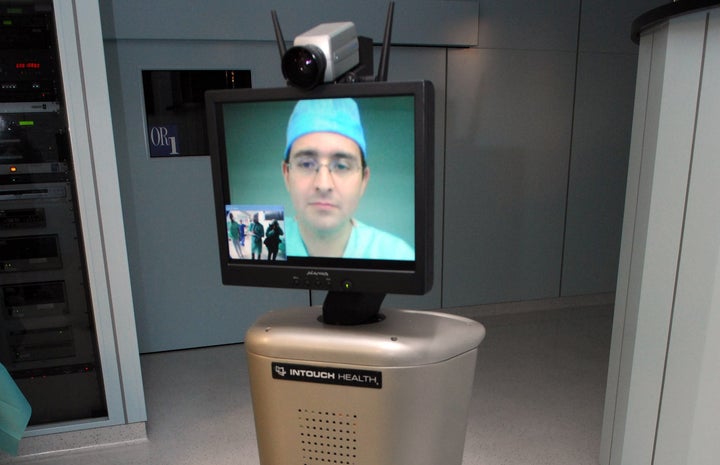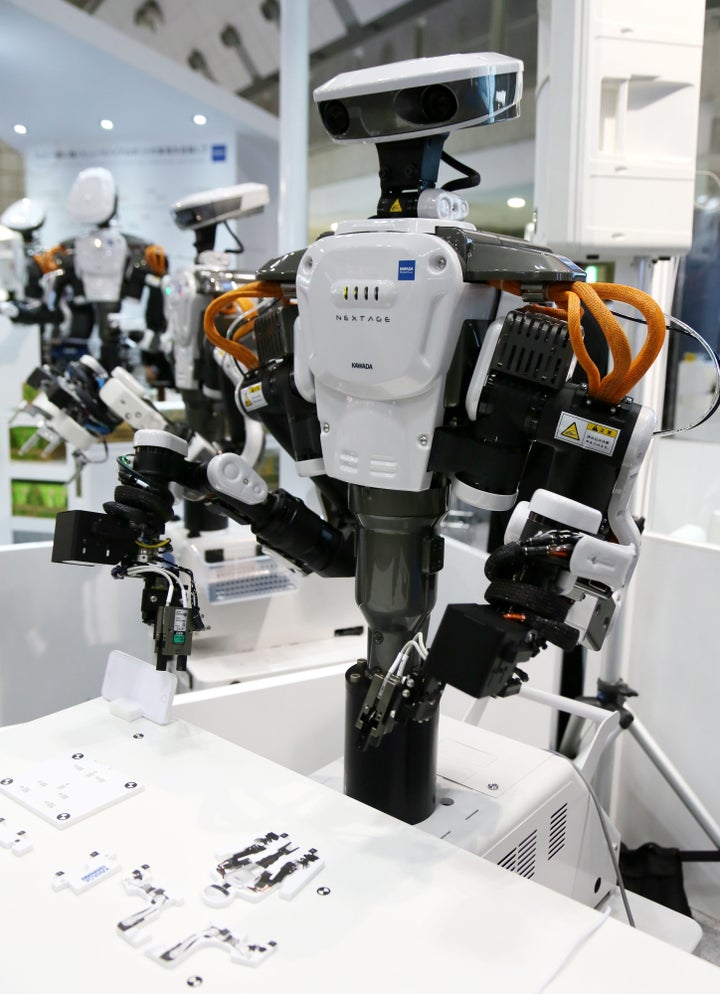
GENEVA ― Globalization can usefully be thought of as a form of arbitrage driven by the simple fact that some things are cheaper in one country than another. In today’s world, we have large international differences in wages and salaries. So far, it is quite difficult to arbitrage wage differences.
And widespread political resistance to mass migration means that low-wage workers are mostly stuck at home. But what if workers in poor nations could sell their labor in rich nations without leaving home? What if the services provided by labor could cross borders without the laborers?
In my new book, “The Great Convergence: Information Technology and the New Globalization,” I argue that rapid advances in computing power and communication technology will make it economical for many more people to work remotely across borders. Soon, a worker in, say, Peru will be able to clean a hotel room in Manhattan without actually being there.
Telerobotics is the technology that overcomes the current need for physical presence in many jobs. These are robots that are controlled not by artificial intelligence but by remote intelligence ― a faraway human operating the robot. Remote intelligence has judgment and flexibility and thus will be far more disruptive than A.I., for both rich and poor nations, especially in the short term.
“A worker in Peru will be able to clean a hotel room in Manhattan without actually being there.”
Examples already exist today in the form of telemedicine, whereby patients are diagnosed and sometimes treated remotely. One particularly striking example is telesurgery, whereby the patient and surgeon are separated by hundreds of miles. Drones are another example. Given how workers are expensive and robots are getting cheaper, it is just a matter of time before R.I. and telerobots replace many manual workers in high-wage nations.
A hotel cleaner in Britain, for instance, earns about $2,250 per month while a worker performing the same job in India earns about $300 per month. Using an Indian worker to “drive” a robot in London would save the hotel around $23,000 per year. While it is not cost effective today (one of the most advanced robots, the HRP-4 from Kawada Industries, costs around $300,000), robot prices have fallen rapidly since 1990 and the trend looks set to continue.
Once robots get cheap enough, the manual services jobs of many in the U.S. will be in direct competition with workers living in low-wage nations. Robots are unlikely to completely replace in-person workers, but they could certainly be used for a huge number of tasks ― from cleaners and gardeners to road workers and factory workers. Language, moreover, will no longer be a barrier. Information technology is already melting the language barrier. Translation applications, such as iTranslate and Google Translate, are good today and rapidly improving.
“With telesurgery, the patient and surgeon are separated by hundreds of miles.”
Much of today’s world of work is characterized by expensive people working in expensive buildings in expensive cities. This makes business sense because most services are hard to produce without face-to-face interaction among workers. Anyone who has tried to quickly finalize a complicated report, wrap up a video or finish a marketing campaign knows that having all the team members in one room can save time and mistakes. For reasons that are easy to believe but hard to explain, face-to-face interactions make cooperation easier, quicker and surer than, say, interactions by phone, email or Skype.
Psychologists tell us that part of the explanation is so-called “microexpressions” ― split-second facial expression changes lasting only 1/25th of a second. These indicate whether a person is concealing emotions, consciously or unconsciously. These cannot be perceived over regular video calls (the refresh rate on the screen is too slow), so non-verbal messages can sometimes be missed in remote conversations.

Technically, really good video calls are possible, but they require expensive systems. Advancing technology, however, is improving the quality of voice and video to the point where, soon, speaking with someone on a screen will be almost as good as speaking with them in person. When this technology gets cheap enough, mobile and widespread, companies can get almost face-to-face interaction without having expensive people grouped in expensive buildings in expensive cities.
Even if in-person meetings are not completely eliminated, the labor cost savings could be enormous. For instance, a British accountant with 5 years experience earns about $3,900 a month, which is almost $3,000 more than a Kenyan accountant with the same amount of experience. While there will always be a need for U.K.-qualified accountants to sign off on the books, much of the real work could be done by telecommuting accountants from Kenya.
“Using an Indian worker to 'drive' a robot in London would save a hotel around $23,000 per year.”
Given the vast North-South salary differences that exist for engineers, designers, accountants, lawyers, publishers and others (including professors of economics), the ability to fractionalize the production of business services could lead to a great deal of what might be called virtual offshoring or telemigration.
Up until now, offshoring has mostly affected factory workers, since manufacturing stages are modular enough to pack up and send abroad. Apart from back office tasks, this has proven harder in the high-end service sectors, since producing services involves lots of in-person interactions. With telepresence, what is now commonplace for blue collar jobs will soon come to expensive workers in expensive offices in expensive cities.
I call this “globalization’s third unbundling” ― the ability to unbundle labor services from laborers and deliver them internationally. This new international wage competition will be a massive shock to workers who are currently ring-fenced ― white collar and professional workers at the high end and manual service workers at the low end. This shock to their living standards, jobs, social standing and social fabric is likely to wreak even more political and societal transformation than we’ve seen thus far.

